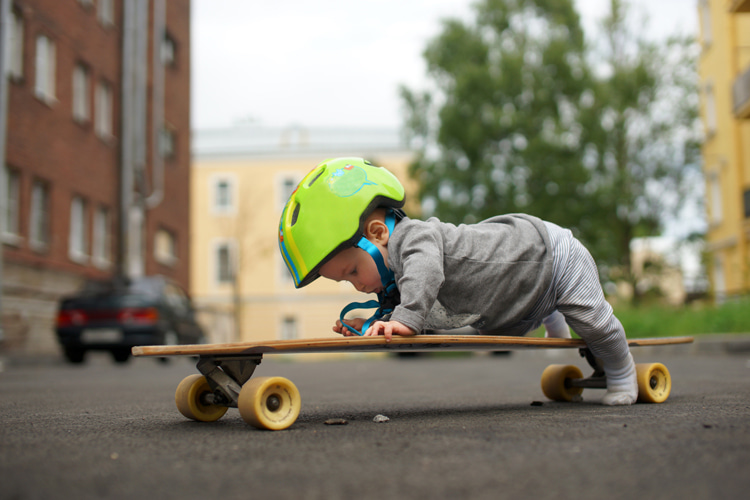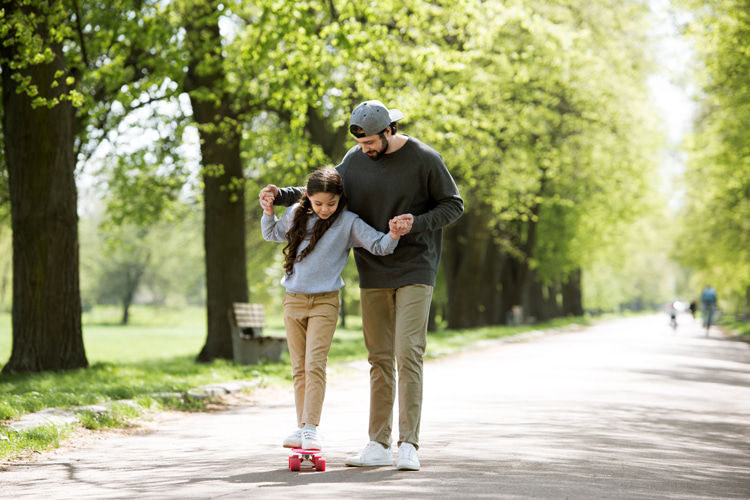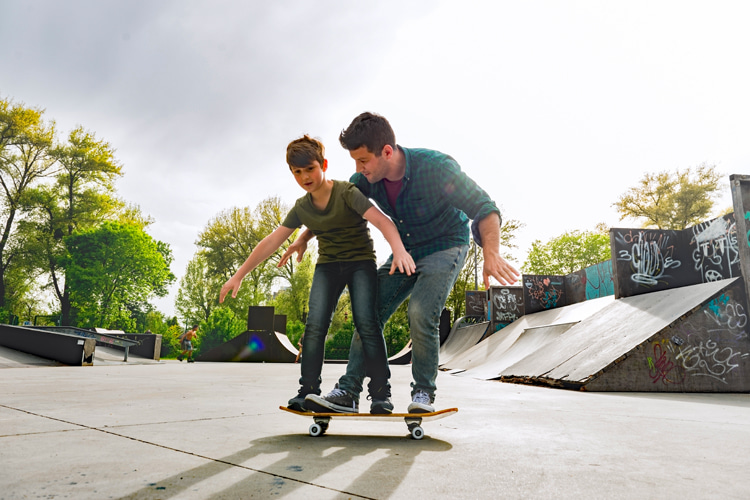Skateboarding is a fun and engaging activity for kids, offering physical, mental, and social benefits.
This step-by-step tutorial will help you teach a child to skateboard safely and effectively, ensuring a positive introduction to sidewalk surfing.
The goal is to ensure a safe and enjoyable riding experience, setting the child up for a lifelong love of the sport.
Remember to be patient, supportive, and open-minded as the youngster learns and grows in their journey.
Choosing the Right Age
It's crucial to introduce skateboarding when the kid is developmentally ready.
The ideal age range is between 4 and 6 years old, as children at this age have developed sufficient motor skills, balance, and coordination.
However, it's essential to consider the youngster's individual readiness as each one develops at their own pace.
Safety Gear and Attire
Before hitting the skate park, make sure the kid is dressed appropriately and wearing protective gear.
This includes:
- Helmet: A certified skateboard helmet that fits snugly without being too tight;
- Knee and elbow pads: These help protect joints from falls and injuries;
- Wrist guards: They support the wrists and help prevent fractures;
- Closed-toe shoes: Skate-specific shoes with flat soles provide better grip and stability;

Choosing the Right Skateboard
When selecting a skateboard for a child, consider the following factors:
- Type: There are different types of skateboards, such as cruisers, longboards, and standard skateboards. For beginners, a standard skateboard is recommended, as it offers more control and versatility;
- Size: Choose a skateboard that suits the youngster's size and age. A smaller skateboard (7.0''-7.5'' wide) is recommended for younger kids, while older children can use a standard-sized skateboard (7.5''-8.0'' wide);
- Trucks and wheels: For beginners, opt for trucks that match the width of the deck and soft wheels (78A-87A durometer) for better grip and a smoother ride;
Finding the Right Location
Choose a flat, smooth location, and free of debris or obstacles. Empty parking lots, basketball courts, and quiet streets are good options.
As the child progresses, introduce them to skate parks and beginner-friendly ramps.
Teaching the Basics
Once the child is equipped with the right gear and skateboard, it's time to teach them the fundamentals.
Stance
Determine whether the kid is regular-footed (left foot forward) or goofy-footed (right foot forward). Ask them to slide on a smooth surface with socks or push them gently and see which foot they use to stop themselves.
Foot Placement
Teach them to place their front foot near the middle of the deck and their back foot on the tail. Encourage them to keep their knees slightly bent and maintain a low center of gravity.
Pushing
Teach the youngster how to push off with their back foot while keeping their front foot on the board. Start with small pushes and gradually increase the strength.
Turning
Demonstrate how to shift their weight on their toes or heels to make a turn, known as carving. Get them to practice this motion while stationary before attempting it while moving.

Preventing and Managing Injuries
Skateboarding comes with inherent risks, so preparing the kid for potential injuries is essential.
Teach them how to fall safely by:
- Rolling: Get them to tuck and roll when falling, which helps absorb the impact;
- Sliding: Teach them to slide on their pads instead of using their hands to break the fall;
- Relaxing: Explain the importance of staying relaxed during a fall, as tensing up can lead to more severe injuries;
Additionally, ensure the youngster takes breaks to rest and recover.
Encourage them to communicate any pain or discomfort they experience, and do not hesitate to seek medical attention if needed.
Adult Mindset and Support
As an adult teaching a kid to skateboard, your mindset plays a crucial role in their success. Keep the following in mind:
Patience
Learning to skateboard takes time, and every child progresses at their own pace. Be patient and allow them to learn from their mistakes.
Encouragement
Offer positive reinforcement and celebrate their achievements, no matter how small. This helps build their confidence and motivation.
Supervision
Always supervise the youngster while they practice to ensure their safety and provide guidance when needed.
Learning Together
If you are unfamiliar with skateboarding, consider learning alongside the kid or seeking guidance from experienced skateboarders or coaches.
Additional Tips and Suggestions
Here are some practical tips to enhance the learning experience:
- Warm-up: Motivate the youngster to perform a proper warm-up routine, including stretches and light exercises, to prevent injuries and improve performance;
- Videos: Watching skateboard movies and videos can be a fun and educational way to familiarize the kid with skateboarding techniques and culture;
- Camps and lessons: Enrolling the child in a skateboarding camp or lessons can provide them with a structured learning environment and access to professional coaching;
- Riding with friends: Skateboarding with friends can make the experience more enjoyable and help the youngster develop social skills and sportsmanship;
